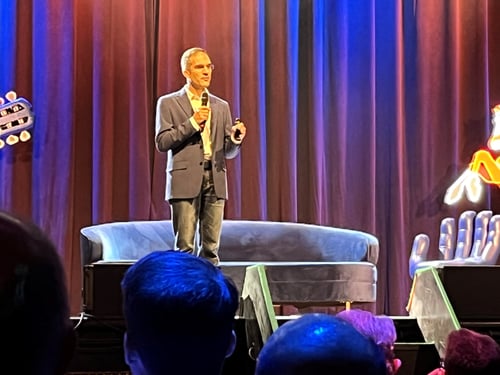The Future of Model-Based Estimating
It wasn’t even a year ago we were advocating for industry-wide standardization of model-based estimating—a concept, even then, that was fresh in the industry.
Brent Pilgrim, National Director of Preconstruction at the Beck Group, asked a group of preconstruction professionals and estimators at Precon World 2022 if they were using model-based estimating regularly—83% replied, ‘no.’
 Model-based estimating replaces 2D drawings with 3D or 5D BIM models. When applied properly, the model-based estimating workflow significantly improves collaboration, accuracy, planning, and the time it takes to apply costs.
Model-based estimating replaces 2D drawings with 3D or 5D BIM models. When applied properly, the model-based estimating workflow significantly improves collaboration, accuracy, planning, and the time it takes to apply costs.
Not only does it make your estimates and process better, but more owners are requesting model-based estimating in their RFPs. For example, one of Beck Group’s owners, Georgia Tech University, wanted “a connected, single source of truth: a model-based process they can provide insight into the health of the project. To achieve this requires intentionality, integration, and automation that doesn’t exist today. Going through the process with the university exposed several gaps that must be overcome, as an industry, to achieve this level of connectedness,” Brent writes in his article The Five Essentials for 5D.
Though the Beck Group has always been a leader in innovation, at the time, the tech just simply wasn’t fully there. Especially tech specific to preconstruction. As pointed out by Johnny Maghzal, Head of Development at Togal.AI, also at Precon World 2022, construction technology traditionally has never focused on preconstruction. But it’s in precon where we can fix our most common problems. Maybe it’s because our industry is notorious for being slow to change and precon has been an afterthought—if a thought at all.
Owners want innovation. They want safer, better buildings built on time and on budget. As an industry, we should be embracing the tools that get us there.
Improving the built environment is the reason why Beck Technology was founded. Our mission is to revolutionize the industry and create the future. Our core values are passion, innovation, and caring. ANY new workflow that makes a better building and improves the lives of not only those who are involved in the process of construction but also those who live and work in those buildings, is something we work hard to support.
Brent, who worked with Beck Technology President, Stewart Carroll, for 8 years on our technology is extremely passionate about model-based estimating and has 15 years of experience using the workflow. However, being at the forefront of preconstruction technology, Brent now says that model-based estimating “is not quite an accurate term for us to use anymore.”
Even before industry-wide adoption, Brent is advocating for it to be called “integrated estimating” because it more accurately describes the continuous estimating workflow model-based estimating supports. Some of you might remember what it was like before 2D takeoff and can’t imagine going back to pencil and paper. Or when you added an estimating tool to import and export information from Excel. Preconstruction technology is made to improve the process and integrated estimating is no different.
What is the Value of Integrated Estimating?
“Imagine preconstruction teams no longer performing the manual process of counting widgets, assigning a cost, and evaluating disparities in estimates. Imagine, instead, that our teams are experts in statistical analysis, wizards wielding artificial intelligence, and masters of risk model simulation.” -Brent Pilgrim
Integrated estimating eliminates the need to wait on a model to be “developed enough” for you to begin applying costs. Brent says when you create a “digital link between a model object and the line item of cost and showing where the quantity comes from, you can start estimating on day one of the concept model.”
How? Because integrated estimating and the tools that augment the process link and map objects to line items and identify the quantity source without any manual entry of quantities. These “digital breadcrumbs,” as Brent calls them, allow you to select a line item and the software traces it back to the model object in one seamless process. As the model is being developed, “all things I’ve applied cost to automatically move over to the next version of the model,” says Brent.
Brent says integrated estimating is the “next generation workflow” and “DESTINI Estimator is the tool from a software standpoint that is perhaps the most poised to capitalize on integrated estimating.”
Augmenting the estimating process allows you and your team to truly use your expertise. Brent says, “If we really want to transform this industry, then we’ve got to realize we need to create opportunities for augmentation and intentionally try to reduce waste.”
How to Apply Integrated Estimating
There are only three pieces of key information you need from the model to create an accurate estimate using the integrated estimating workflow. To learn what those are, click the button below to download your free access to Brent Pilgrim’s session and many others from Precon World 2022.

-1.png?width=112&height=112&name=image%20(4)-1.png)














